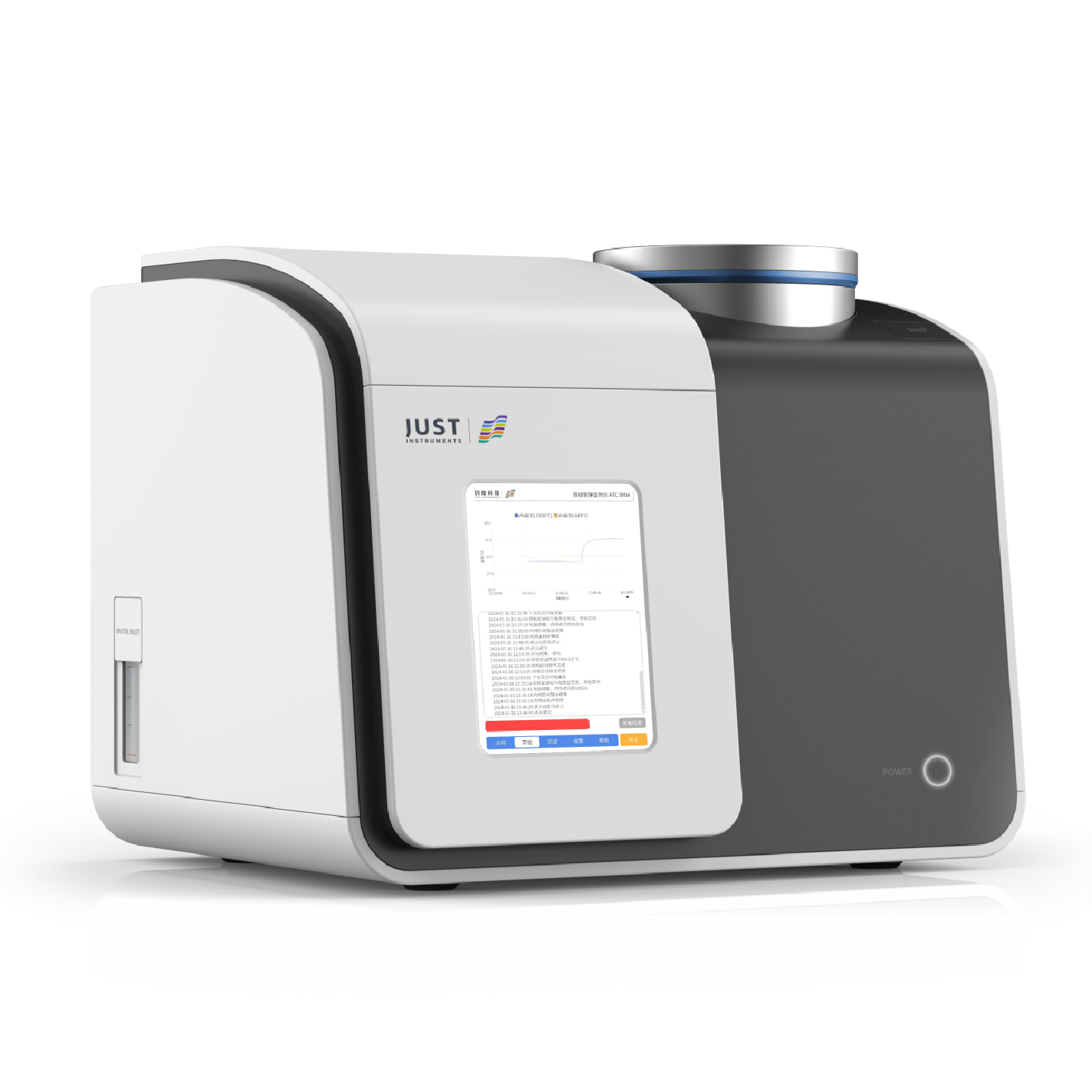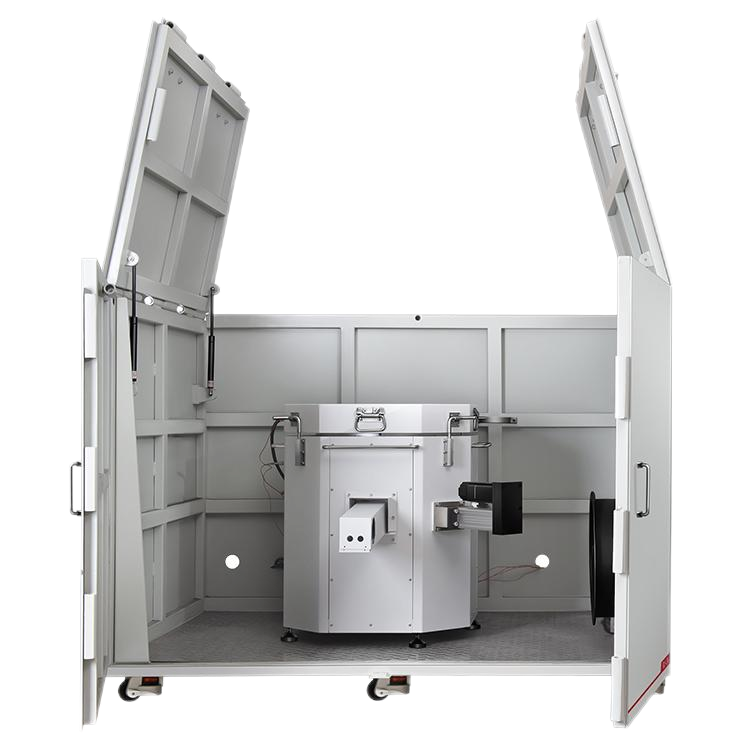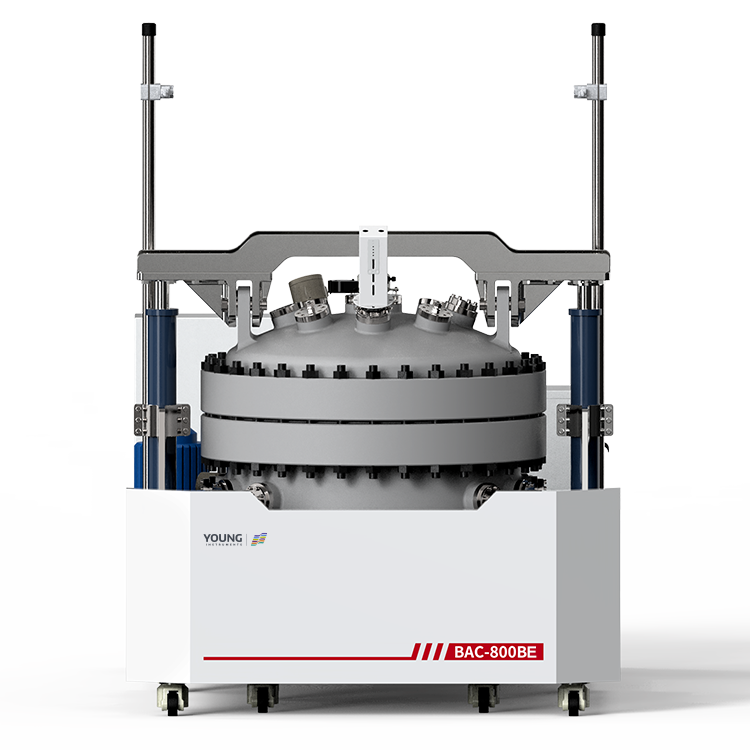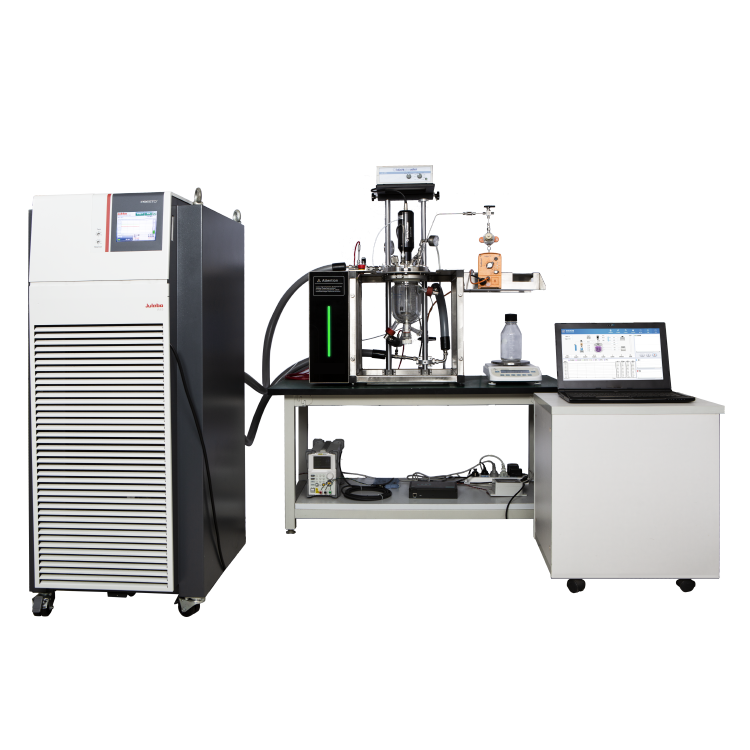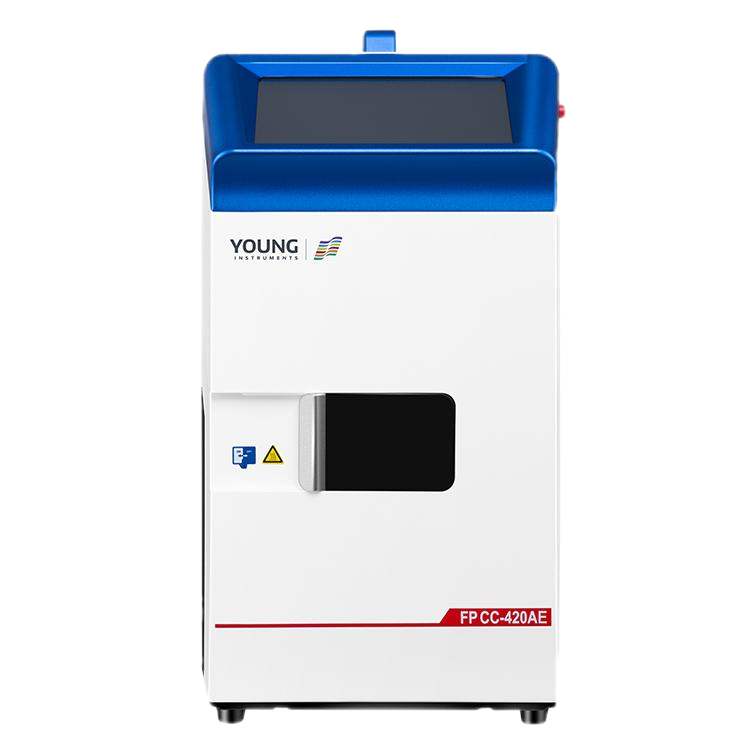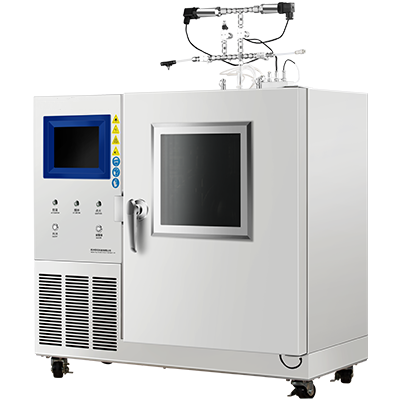Accurate Measurement Strategies for the Thermal Conductivity Testing of Pouch Lithium-ion Batteries
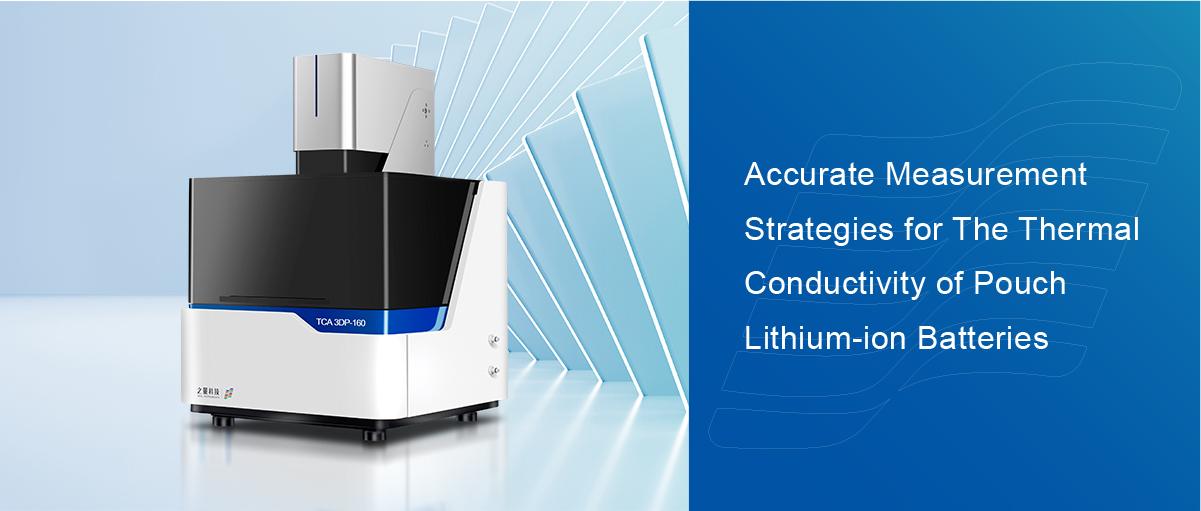
Introduction – Pouch Lithium-ion Batteries
The 3D Thermal Properties Analyzer (TCA 3DP-160) has emerged as a cutting-edge instrument in the realm of assessing the anisotropic thermal conductivity of soft-pack lithium-ion batteries. This article delves into the intricacies of designing rational testing methodologies tailored to different battery types to attain more precise testing outcomes.
Principle Overview – Pouch Lithium-ion Batteries
The 3D Thermal Properties Analyzer(TCA 3DP-160), a groundbreaking device, operates on the principles of infrared thermography coupled with three-dimensional thermal data inversion techniques. During testing, flexible electric heating sheets are affixed to the bottom of soft-pack lithium-ion batteries, and subjected to pulsed thermal stimuli, while infrared thermography captures surface temperatures non-invasively, recording spatial temperature distribution and temporal evolution data. By integrating temperature data with the three-dimensional thermal transfer numerical model of the test object, intelligent optimization algorithms perform thermal parameter inversion calculations, simultaneously determining the battery’s transverse and longitudinal thermal conductivities (kx, kz). The derived thermal parameters minimize model prediction errors, enhancing testing accuracy.
The congruence between the actual heat transfer pathways within the sample and the numerical model determines the confidence level of the test results. Qualitative evaluation of these metrics can be achieved through error curves generated during the inversion calculation process. The error curve exhibits a “V” shape, with sharper shapes indicating higher confidence in the measurement results, i.e., greater sensitivity of observed temperatures to thermal conductivity deviations. In ideal conditions, as depicted in Figure 2, the heat flux released by the heating element penetrates the battery core and conducts to the upper surface. However, mismatches in heating element adaptation or improper parameter settings can lead to significant heat flux conduction along the aluminum-plastic film, deviating from the calculation model and compromising measurement accuracy. Additionally, insufficient temperature rise at the observation surface can reduce measurement precision due to temperature noise-induced random errors.

Figure 1 TCA 3DP-160 3D Thermal Property Analyzer Test Principle
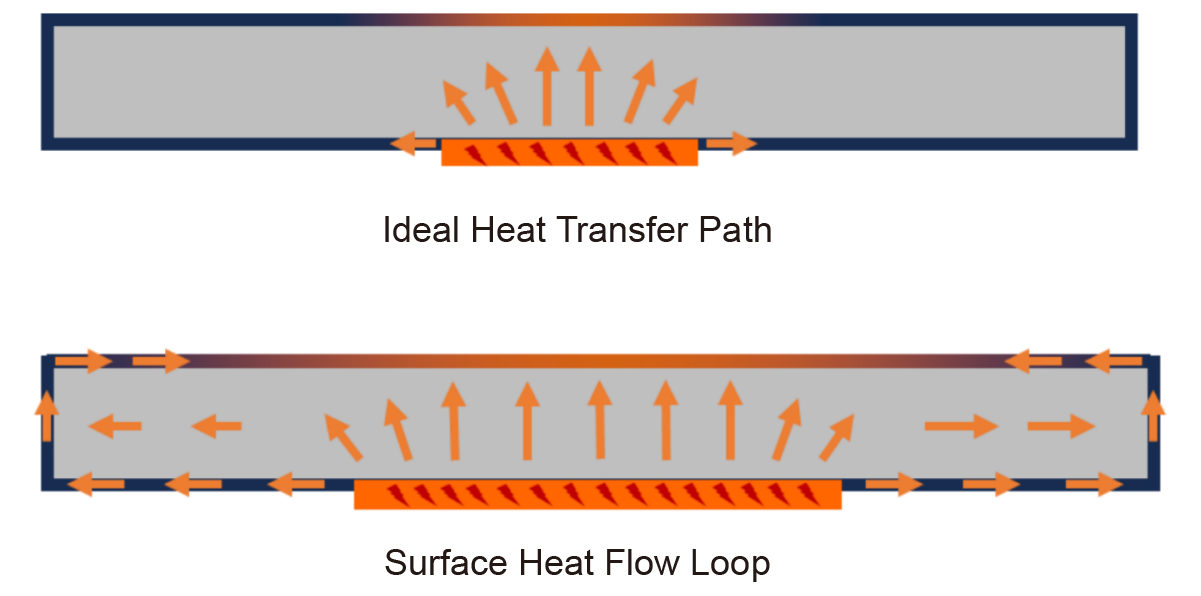
Fig. 2 Differences in heat transfer paths due to different sizes of electric heating pads
According to the above measurement principle, the ideal thermal excitation source should be characterized by small heating area and large heating power, while the heating scheme such as heating duration and period and other parameter settings need to be matched with the sample and heating source characteristics. In this paper, we select three typical size samples, focus on the selection of heating pads and heating program design ideas, combined with specific application examples to help users obtain more effective test data.
Sample Preparation – Pouch Lithium-ion Batteries
For this study, three representative samples comprising two energy storage batteries and one mobile phone battery were selected for testing. These samples exhibit varying dimensions, necessitating different specifications of heating elements for experimentation. The specifics of the samples are outlined in Table 1.

Figure 3 Photographs of 3 battery samples
Table 1 Test sample information
|
Serial Number |
Sample Name |
Sample Size/mm |
Heating Piece Size/mm |
|
1 |
25Ah Soft-pack Lithium Battery |
222*138*19.3 |
29*23 |
|
2 |
15Ah Soft-pack Lithium Battery |
227*170*9.5 |
54*36 |
|
3 |
35Ah Soft-pack Lithium Battery |
68.5*48*5.8 |
6*3 |
Sample Testing
15Ah Soft-pack Lithium Battery Testing
The 15Ah Soft-pack Lithium Battery, characterized by a relatively high aspect ratio (>20), facilitates rapid heat penetration, resulting in a pronounced temperature gradient on the surface. Therefore, it’s possible to reduce heating power or shorten heating time while ensuring a sufficient signal-to-noise ratio to mitigate the influence of heat flow loops. The experiment utilized the standard heating element with dimensions of 54mm × 36mm, with a heating power of 8W, a heating time of 30s, and one heating cycle. The testing scheme yielded optimal results, as depicted in Figure 4, with temperature prediction error within 0.12°C and sharp V-shaped error curves indicating high confidence in the results. The optimized thermal parameters were determined as kx=23.93 W/(m·K) and kz=0.36 W/(m·K).

Figure 4 15Ah Soft-pack Lithium Battery (a) heating plate installation method; (b) prediction error spatial distribution diagram; temperature time-varying curve of sample center point position (b) comparison between simulation and (c) measured results; (e) longitudinal and ( f) Oriented thermal conductivity error curve
25Ah Soft-pack Lithium Battery Testing
The 25Ah battery, characterized by a greater thickness, necessitates longer heating times and higher heating power to establish adequate temperature gradients on the observation surface. However, this can lead to heat flow loop effects. To address this, a heating element with increased power and reduced dimensions (29mm × 23mm) was employed, with a heating power of 28W, heating time of 75s, cooling time of 150s, and two heating cycles. The testing scheme ensured both measurement accuracy and precision, with temperature prediction error within 0.2°C and high confidence in the thermal parameters (kx=22.34 W/(m·K), kz=0.57 W/(m·K)).
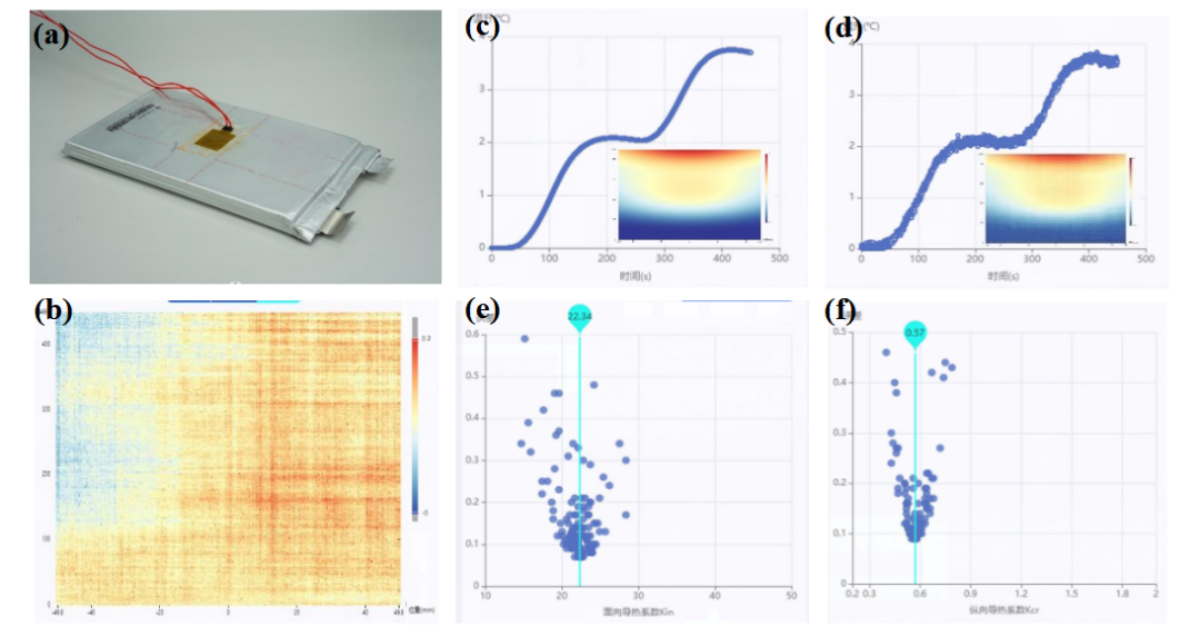
Figure 5 25Ah Soft-pack Lithium Battery (a) heating plate installation method; (b) prediction error spatial distribution diagram; temperature time-varying curve of sample center point position (b) comparison between simulation and (c) measured results; (e) longitudinal and ( f) Oriented thermal conductivity error curve
3.5Ah Small Soft-pack Lithium Battery Testing
Similarly, the small-sized 3.5Ah battery requires a heating element with high power and minimal dimensions to achieve optimal testing conditions. A heating element with dimensions of 6mm × 3mm was utilized, with a heating power of 4W, heating time of 10s, and one heating cycle. The testing scheme maintained prediction errors below 0.15°C, with high confidence in the thermal parameters (kx=25.91 W/(m·K), kz=0.91 W/(m·K)).
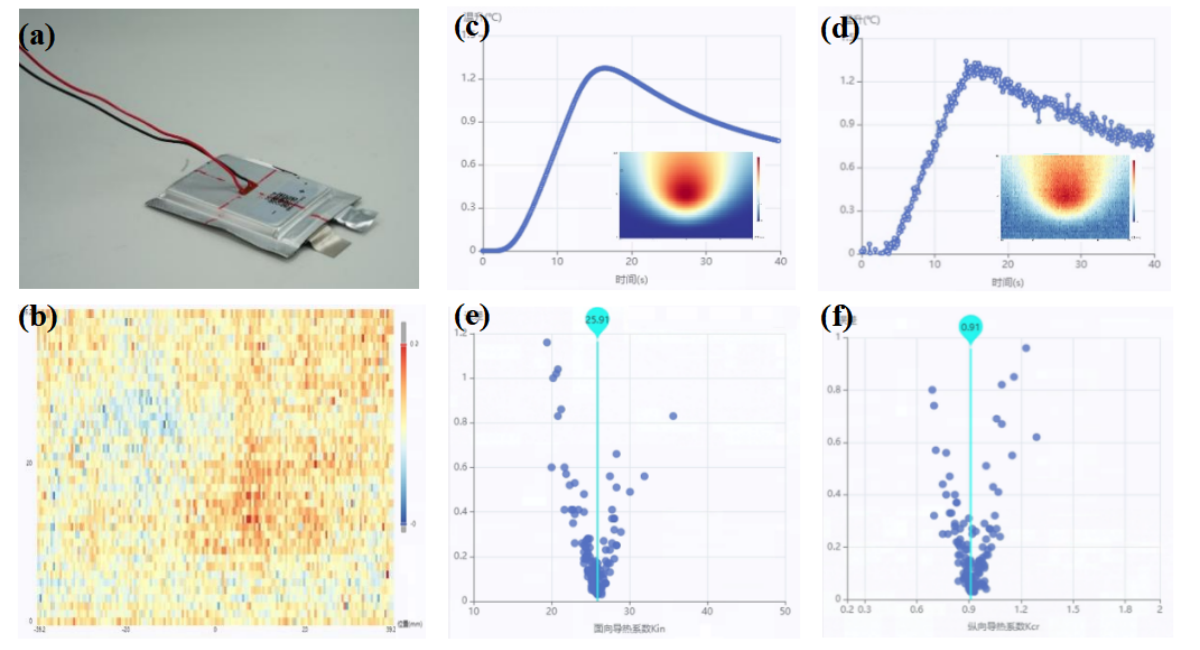
Figure 6 3.5Ah Soft-pack Lithium Battery test (a) heating plate installation method; (b) prediction error spatial distribution diagram; temperature time-varying curve at the center point of the sample (b) comparison between simulation and (c) measured results; (e) longitudinal Thermal conductivity error curve with (f)
Conclusion
The 3D Thermal Properties Analyzer(TCA 3DP-160) offers accurate and efficient analysis of the thermal conductivity of soft-pack lithium-ion batteries. Rational testing methodologies further enhance the accuracy and precision of test results. Zeal Instruments provides heating elements of various specifications and has developed intelligent heating scheme recommendation algorithms to automatically set reasonable experimental parameters based on sample characteristics, significantly reducing operational complexity and ensuring user convenience.







